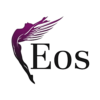Table of Contents
ToggleVietnamese coffee is a rich blend of history, culture, and innovation that has captured the attention of coffee lovers around the world. Introduced by French colonists in the 19th century, coffee quickly became an integral part of Vietnam’s agricultural and cultural landscape. Over time, the country developed its own distinct coffee traditions, from the strong, slow-dripped brews made with the iconic phin filter to sweet and creamy drinks like cà phê sữa đá and egg coffee. As the second-largest coffee exporter globally and a rising force in the specialty coffee scene, Vietnam continues to shape the global coffee market while preserving the local customs that make its coffee experience so unique.
The History and Significance of Vietnamese Coffee
Vietnam has a long and storied relationship with coffee, dating back to the 19th century when French colonists introduced the crop. Historical records indicate that coffee cultivation began in the mid-1800s, with the first plantations established in the northern regions and later expanding to the Central Highlands, which remains Vietnam’s coffee heartland today. The country’s ideal climate and fertile soil quickly turned it into a prime coffee-producing region. Today, Vietnam is the world’s second-largest coffee exporter, after Brazil, accounting for approximately 21.9% of global coffee exports in 2022, according to the International Coffee Organization. The country is particularly known for its robusta beans, which constitute over 95% of its total coffee production and are valued for their high caffeine content and bold, bitter flavor, making them a key ingredient in instant coffee and espresso blends.
Read more: Vietnam’s Food & Beverage Industry: Growth, Trends, and Future Outlook
Coffee is deeply embedded in Vietnamese culture, with traditional preparation methods that reflect the country’s unique tastes. One of the most iconic brewing methods is the phin filter, which was also introduced by the French during the colonial era. Adapted from European drip coffee techniques, the phin became widely used in Vietnam due to its affordability, durability, and ability to extract strong flavors from robusta beans. It’s a small metal drip filter that allows hot water to slowly extract the rich flavors of the coffee. The phin creates a strong, concentrated brew that is typically enjoyed black (cà phê đen) or with sweetened condensed milk (cà phê sữa đá). This slow-drip process not only enhances the coffee’s bold taste but also encourages a more mindful and leisurely coffee-drinking experience, which is central to Vietnamese coffee culture.
Cà phê sữa đá is the most famous drink, and it’s a rich, strong brew served over ice with sweetened condensed milk. This beloved drink has its origins in the French colonial era, when fresh milk was scarce, and sweetened condensed milk became a practical substitute. The practice became even more widespread during the wartime 1990s, when economic hardships made dairy products difficult to obtain. As a result, condensed milk became a staple ingredient in Vietnamese coffee culture, creating the signature sweet and creamy profile that remains popular today.
Another well-known variety is egg coffee (cà phê trứng), a creamy concoction made by whipping egg yolk with sugar and condensed milk, creating a frothy, custard-like topping.
Beyond daily consumption, coffee plays a significant role in social interactions and business meetings. The thousands of street-side cafes and contemporary coffee shops reflect how deeply ingrained coffee culture is in Vietnam’s way of life.
Read more: The Bubble Tea Market and Its Growing Popularity

The Current Popularity of Vietnamese Coffee
Vietnamese coffee has gained international recognition in recent years, thanks to growing global interest in unique brewing techniques and distinctive flavors. The European Union remains Vietnam’s largest coffee export market. During the 2023-2024 crop year, Vietnam exported 563,000 tonnes of coffee to the EU, valued at $2 billion. Notably, Germany and Italy were top individual markets, with export values of $607 million and $417 million, respectively. Specialty coffee shops in major cities worldwide now also feature Vietnamese coffee on their menus, and Vietnamese-inspired coffee brands have emerged, bringing traditional flavors to global audiences.
Vietnam’s coffee exports remain strong, with the country supplying a significant portion of the world’s robusta beans, which are widely used in instant coffee and espresso blends. The rise of high-quality, locally roasted Vietnamese arabica beans is also attracting specialty coffee enthusiasts who appreciate the complexity and depth of flavor that Vietnam has to offer.
Domestically, coffee consumption is also evolving. While traditional sidewalk coffee stalls remain popular, there is a growing preference for modern, specialty coffee shops that focus on high-quality beans, innovative brewing methods, and stylish cafe atmospheres. This shift has been fueled by a younger generation eager to explore new coffee trends while maintaining their cultural heritage.
The Future of the Vietnamese Coffee Market
The future of Vietnamese coffee looks bright, with increasing demand for both exports and high-quality local consumption. Several key trends are shaping the industry’s growth, with Vietnam’s coffee exports reaching nearly 1.7 million metric tons in 2022, generating approximately $4 billion in revenue, according to the Vietnam Coffee-Cocoa Association. Additionally, the specialty coffee sector is expected to grow at a CAGR of 10.4% from 2025 to 2030, as consumer demand for high-quality, ethically sourced coffee increases.
Specialty Coffee and Arabica Expansion
Vietnam has long been known as the world’s largest producer of robusta coffee, but a significant shift is underway toward cultivating more arabica beans. This transition is particularly evident in high-altitude regions like Da Lat, Son La, and Quang Tri, where cooler temperatures and favorable soil conditions support arabica growth. Arabica coffee commands a higher market value due to its smoother, more nuanced flavor profile, which appeals to specialty coffee consumers worldwide.
This expansion is being driven by changing consumer preferences, as coffee enthusiasts increasingly seek high-quality, single-origin coffees with unique flavor notes. Vietnamese producers and cooperatives are responding by experimenting with processing methods such as honey and natural drying techniques to enhance arabica’s distinct flavors. Additionally, the growing specialty coffee culture in Vietnam, with third-wave coffee shops focusing on locally sourced beans, is further encouraging this shift. International buyers and specialty roasters are also taking notice, partnering with Vietnamese farmers to secure high-quality arabica beans for premium coffee blends.
Sustainable and Ethical Practices
As global consumers become more conscious of the environmental and ethical impact of coffee production, Vietnamese coffee producers are increasingly prioritizing sustainability initiatives. Traditionally, large-scale coffee farming in Vietnam has been associated with intensive agricultural practices, but efforts are now being made to reduce deforestation, promote biodiversity, and enhance soil health.
Farmers are adopting shade-grown techniques, reducing the reliance on chemical fertilizers, and implementing water-efficient irrigation systems to combat the challenges of climate change. Certifications such as Rainforest Alliance, Fair Trade, and UTZ are becoming more common among Vietnamese coffee producers, allowing them to access higher-value markets and ethical consumers. Additionally, direct trade partnerships between farmers and specialty coffee roasters are growing, ensuring better wages for farmers and greater transparency in the supply chain.
Government and non-governmental organizations (NGOs) are also supporting these initiatives by providing training on sustainable farming methods and helping smallholder farmers improve yields while minimizing environmental impact. These advancements are aligning Vietnam’s coffee industry with global sustainability standards, ensuring long-term viability and international competitiveness.
Innovative Coffee Products
Vietnam’s creative approach to coffee continues to set it apart from other coffee-producing nations. The country’s rich coffee culture has led to the development of unique coffee flavors and products that are now gaining traction both locally and internationally.
One of the most popular innovations is Vietnamese instant coffee, which incorporates traditional flavors like coconut coffee, egg coffee, and condensed milk coffee. These specialty instant coffees cater to busy consumers who want an authentic Vietnamese coffee experience without needing specialized brewing equipment. As a result, Vietnamese brands such as G7, Vinacafé, and Trung Nguyên Legend are expanding their product lines to appeal to both domestic and international markets.
Another growing trend is the ready-to-drink (RTD) Vietnamese-style coffee beverages available in bottles and cans, found in convenience stores and supermarkets worldwide. Companies are also experimenting with plant-based and dairy alternatives, offering products like Vietnamese oat milk coffee to cater to changing dietary preferences. The rise of cold brew Vietnamese coffee, featuring high-quality robusta and arabica blends, is another indication of how the market is evolving. These innovations position Vietnam as a leader in modernizing traditional coffee flavors for the global market.
Read more: Vietnam Payroll Guide: Compliance, Compensation, and Employer Responsibilities
Increased Global Presence
Vietnamese coffee is making a stronger impact on the global stage, with more local brands expanding into international markets. Traditionally, Vietnam’s coffee exports were dominated by unprocessed robusta beans sold to large international coffee chains and instant coffee manufacturers. However, this is changing as Vietnamese coffee brands are building direct relationships with global consumers.
With the rise of e-commerce platforms like Amazon, Shopee, and Alibaba, Vietnamese coffee companies are selling directly to international customers, bypassing traditional trade routes and reaching specialty coffee enthusiasts worldwide. Direct-to-consumer sales, especially of premium Vietnamese coffee beans and instant coffee products, are growing rapidly, allowing local brands to capture more value from their exports.
Additionally, Vietnamese coffee shops are expanding overseas. Brands such as Trung Nguyên Legend and Cộng Cà Phê have opened locations in South Korea, the United States, and Europe, bringing authentic Vietnamese coffee experiences to new audiences. International coffee chains, including Starbucks and Blue Bottle Coffee, have also incorporated Vietnamese-style coffee drinks into their menus, introducing global consumers to flavors like Vietnamese iced coffee (cà phê sữa đá) and egg coffee (cà phê trứng).
With growing recognition in specialty coffee circles and mainstream markets, Vietnam’s influence on global coffee culture continues to expand. As the demand for high-quality, ethically sourced, and uniquely flavored coffee grows, Vietnam is well-positioned to become a major player in the premium coffee industry worldwide.
Conclusion
Vietnamese coffee is not just a beverage; it is a cultural icon with deep historical roots and a dynamic future. With its rich tradition, growing global appeal, and innovative adaptations, Vietnam is set to continue playing a major role in the international coffee industry. According to market projections from the Vietnam Coffee-Cocoa Association, the country’s coffee exports are expected to grow by 5% annually over the next decade, with specialty coffee emerging as a key driver of expansion. Additionally, increasing global demand for sustainable and ethically sourced coffee is likely to position Vietnam as a leader in environmentally responsible coffee production. Whether through a traditional cup of cà phê sữa đá or a specialty arabica blend, Vietnamese coffee remains a source of pride and economic strength for the country, while delighting coffee lovers worldwide.
Contact us today to learn how our EOR services can facilitate your successful entry into Vietnam’s dynamic coffee industry. Check our services here or book a free consultation now.







